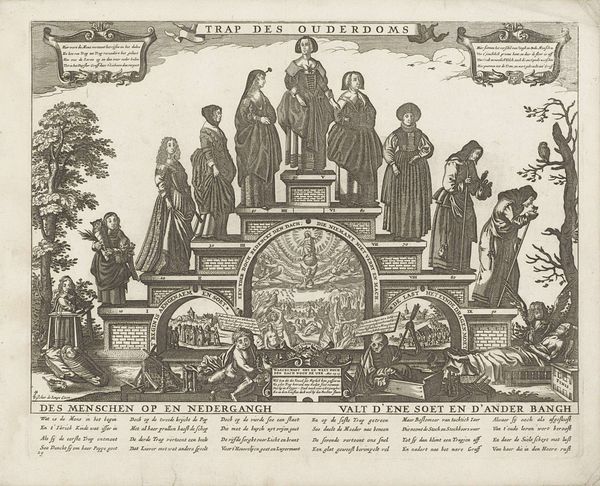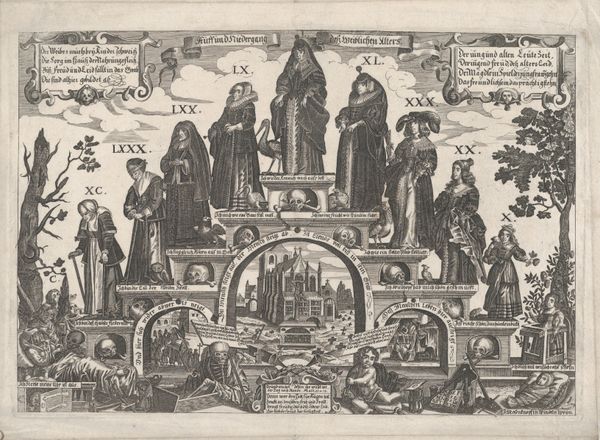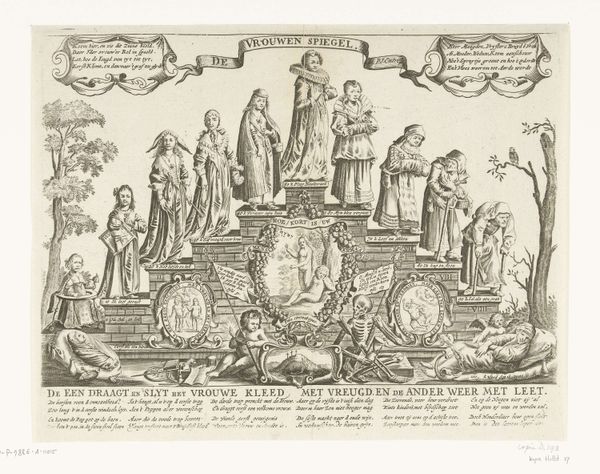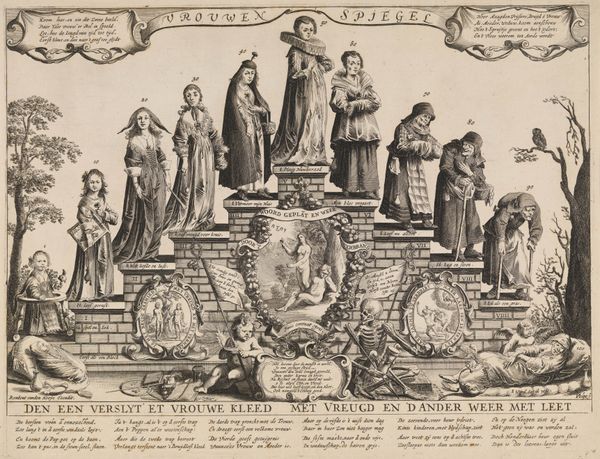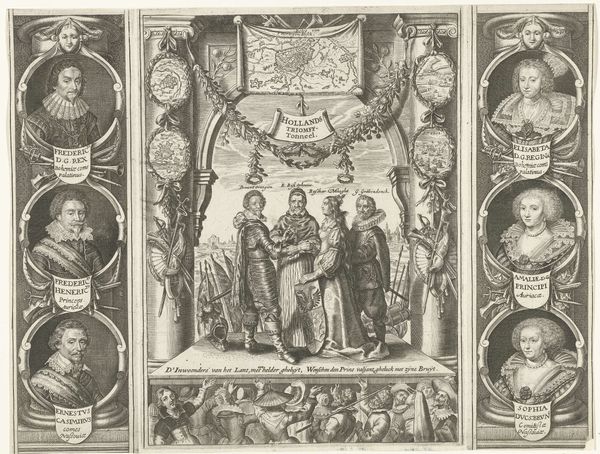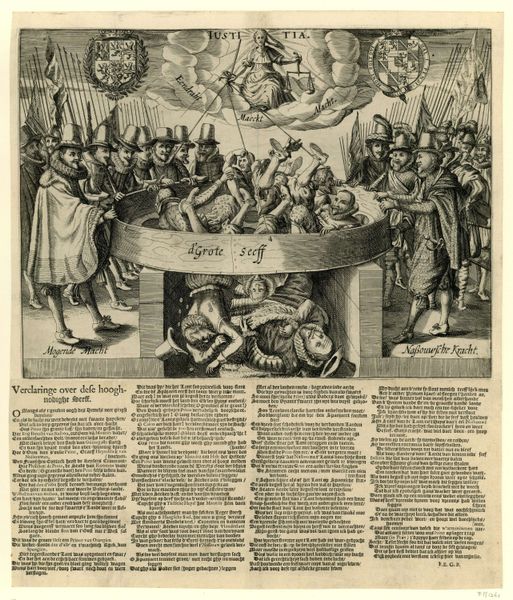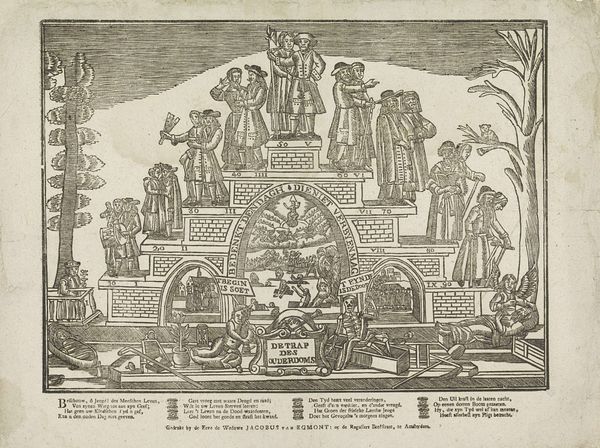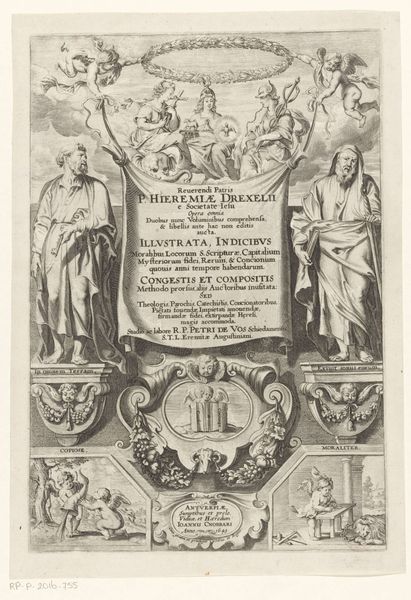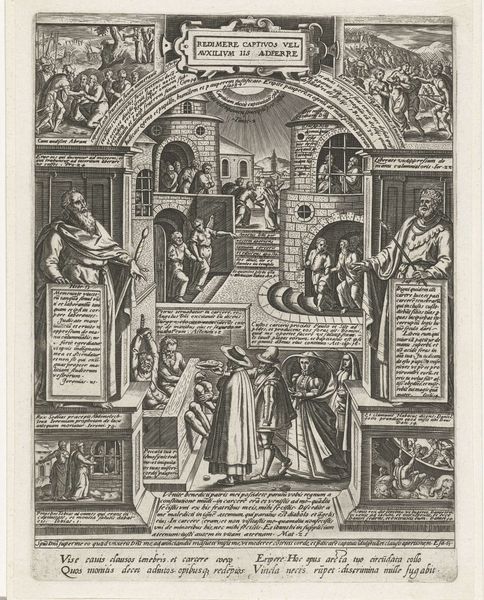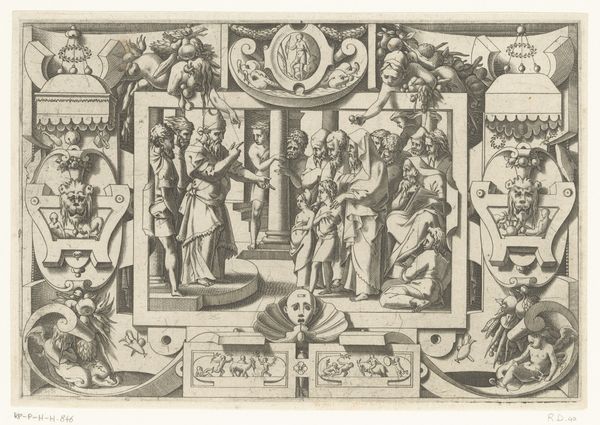
print, engraving
#
narrative-art
#
baroque
# print
#
old engraving style
#
figuration
#
history-painting
#
engraving
Dimensions: height 284 mm, width 354 mm, height 245 mm, width 307 mm
Copyright: Rijks Museum: Open Domain
Curator: This is an engraving entitled "Trap der voorbeelden des Heeren Jesu Christi," dating roughly from 1648 to 1712, and attributed to Frederik de Wit. It's currently held in the Rijksmuseum collection. Editor: My first impression is that it looks very ordered and allegorical. A pyramidal structure of figures dominates, and the print's details and lettering give it the feel of a carefully constructed argument. Curator: Precisely. The “ladder,” as the title translates, illustrates key Old Testament figures ascending towards Christ. We see prophets, patriarchs, priests... each figure is rendered with significant individualizing detail, despite the relatively small scale. They each become symbolic types. Editor: How do you mean, symbolic types? Curator: Think of the image as representing an argument for divine authority and the lineage leading to Christ. Noah, Abraham, Moses – each stands for an ideal of obedience, faith, law, and so on. Each figure on the stairs advances a stage in the spiritual progression toward Jesus as he is meant to fulfill the promise of the Old Testament. Editor: I can certainly see that, particularly given how consciously it places narrative scenes at the very base of this ladder: the nativity, the expulsion from paradise, the resurrection. Those function almost like prefigurative bases or support for those higher up in the hierarchy of spiritual development. Curator: Right, each figure stands upon those foundations of Biblical history. This structured, hierarchical approach to visualizing religious history reflects Baroque sensibilities, the taste for order, classification, and above all didactic clarity in visual communication, especially religious visual communication. It almost resembles an ancestral family tree. Editor: I wonder how accessible an image like this would have been to the average viewer? The Latin inscription "Huic omnes prophetae testimonium perhibent" suggests at least some intended audience of scholarly elites or literate patrons. I wonder what they would have understood about its history and implications. Curator: Good point, its distribution likely depended on social standing and education levels during the Dutch Golden Age when religious and political ideologies deeply intertwined within public life. Its meaning could vary depending on one's background and interpretive lens at that specific moment in history. Editor: Ultimately, studying works like these reminds us that artistic expressions were as vital a tool as written treatises in negotiating ideas of cultural memory, authority, and identity throughout history. It is important to remember those conversations of cultural identity are ongoing.
Comments
No comments
Be the first to comment and join the conversation on the ultimate creative platform.
